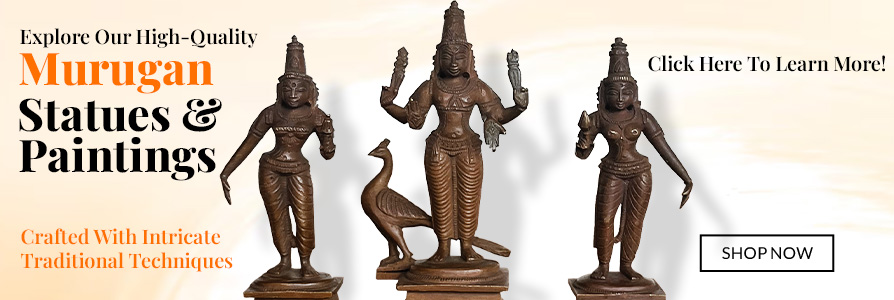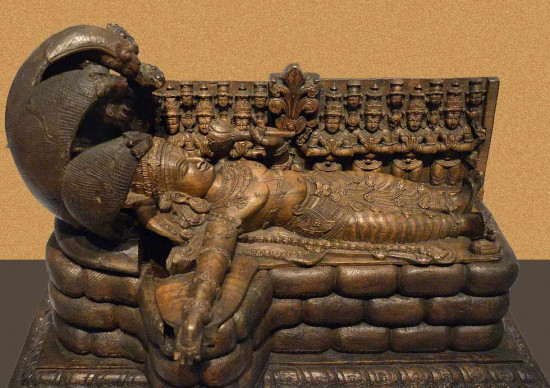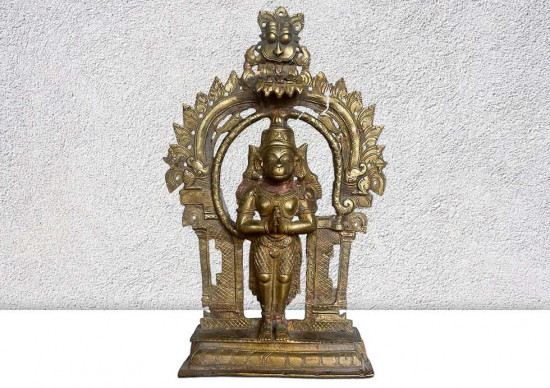
Lord Kartikeya, also known as Murugan, Subrahmanya, and Skanda, is a prominent Hindu deity. Worshiped primarily by Hindus from Tamil Nadu, Lord Kartikeya holds great reverence in several nations, including Malaysia, Singapore, Mauritius, Reunion Island, and Sri Lanka. As the brother of Lord Ganesha and the son of Lord Shiva and Goddess Parvati, Lord Kartikeya occupies a significant position in Hindu mythology. Often depicted in art and sculptures alongside Lord Shiva, Goddess Parvati, and Lord Ganesha, Lord Kartikeya represents the embodiment of divine familial bonds.

Different Names of Lord Kartikeya
Lord Kartikeya is known by various names such as Swaminatha, Arumugam, Kumaran, Guruhuha, Velan, Shadanana, Sanmuga, Saravana, Shantakumar, Senthil, Guha, and Sanmukha. These names signify different aspects and qualities associated with him. Lord Kartikeya, also known as Thamizh Kaduvul or the “God of Tamils,” is particularly revered among the Tamil population.
Iconography
The iconography of Lord Kartikeya vividly portrays his essence as a warrior deity. One of the most prominent aspects of his iconography is his association with a peacock, which serves as his vahana or mount. The peacock represents beauty, grace, and resilience, showcasing Lord Kartikeya’s ability to navigate through challenging situations with elegance and poise.
Lord Kartikeya’s choice of mount holds symbolic significance. The peacock, with its vibrant and captivating plumage, represents the subjugation of pride and ego. It serves as a reminder to his devotees to transcend these qualities in their pursuit of spiritual growth and victory over inner and outer obstacles.
Additionally, Lord Kartikeya is often depicted holding a spear or a lance known as a vel. The vel is a powerful weapon that symbolizes his prowess in combat and his ability to vanquish negativity and evil forces. The vel represents sharpness, focus, and the strength to overcome obstacles on the path of righteousness.
Lord Kartikeya’s depictions also include him being encircled by serpents. These serpents signify his command over Kundalini energy, which represents spiritual awakening and transformation. It emphasizes his role as a guide and protector in leading individuals towards spiritual enlightenment.
Furthermore, Lord Kartikeya is depicted with multiple faces, usually six, which signifies his multifaceted nature and his ability to be present in various realms simultaneously. Each face represents a different aspect or form of the divine, highlighting his versatility and all-encompassing presence.
The overall imagery of Lord Kartikeya as a warrior riding a peacock, wielding a vel, and adorned with serpents represents his divine attributes of courage, strength, agility, and spiritual wisdom. It inspires devotees to embody these qualities in their own lives as they face challenges and strive for victory over obstacles, both inner and outer.
Lord Kartikeya’s choice of mount holds symbolic significance. The peacock, with its vibrant and captivating plumage, represents the subjugation of pride and ego. It serves as a reminder to his devotees to transcend these qualities in their pursuit of spiritual growth and victory over inner and outer obstacles.
Additionally, Lord Kartikeya is often depicted holding a spear or a lance known as a vel. The vel is a powerful weapon that symbolizes his prowess in combat and his ability to vanquish negativity and evil forces. The vel represents sharpness, focus, and the strength to overcome obstacles on the path of righteousness.
Lord Kartikeya’s depictions also include him being encircled by serpents. These serpents signify his command over Kundalini energy, which represents spiritual awakening and transformation. It emphasizes his role as a guide and protector in leading individuals towards spiritual enlightenment.
Furthermore, Lord Kartikeya is depicted with multiple faces, usually six, which signifies his multifaceted nature and his ability to be present in various realms simultaneously. Each face represents a different aspect or form of the divine, highlighting his versatility and all-encompassing presence.
The overall imagery of Lord Kartikeya as a warrior riding a peacock, wielding a vel, and adorned with serpents represents his divine attributes of courage, strength, agility, and spiritual wisdom. It inspires devotees to embody these qualities in their own lives as they face challenges and strive for victory over obstacles, both inner and outer.
Lord Murugan in Literature

The origins of Lord Kartikeya have been described in various Hindu epics, Puranas, and Vedic scriptures. The Mahabharata provides a complex explanation of his origins, mentioning his creation by Svaha and Agni for the purpose of defeating the demon Mahisha Asura. Lord Shiva appointed Lord Kartikeya as the Commander-in-Chief of the Army of the Devas, and he was eventually acknowledged by Lord Indra. His divine consort is Devasena, the daughter of Lord Indra.
In the Vedas, Lord Kartikeya is regarded as the son of the fire deity Agni. The Satapatha Brahmana identifies him as the ninth manifestation of Agni and the son of Rudra. The Chandogya Upanishad portrays Lord Kartikeya, also known as Skanda, as a path leading to wisdom. Other scriptures such as the Baudhayana Dharmasutra and the Taittiriya Aranyaka contain references to Lord Kartikeya and his significance.
In the Vedas, Lord Kartikeya is regarded as the son of the fire deity Agni. The Satapatha Brahmana identifies him as the ninth manifestation of Agni and the son of Rudra. The Chandogya Upanishad portrays Lord Kartikeya, also known as Skanda, as a path leading to wisdom. Other scriptures such as the Baudhayana Dharmasutra and the Taittiriya Aranyaka contain references to Lord Kartikeya and his significance.
Worship and Temples Dedicated to Lord Kartikeya

Worship of Lord Kartikeya is observed in different forms and rituals. Skanda Shasti, a six-day period of fasting and prayer, is celebrated in TamilNadu during the month of Aippasi. Thaipusam, observed in the Tamil month of Thai, is another important festival dedicated to Lord Kartikeya. Devotees also worship Lord Kartikeya on Tuesdays during the Tamil month of Adi.
Lord Kartikeya is adored during the Durga Puja festival in Bengal, and his presence is felt throughout the Kartikeya month in the region. Unique customs, such as placing hidden images or statues of Lord Kartikeya in homes where a newborn son is welcomed, are practiced in Bengal.
Temples dedicated to Lord Kartikeya can be found across Southern India, including the renowned Arupadaiveedu temples. Additionally, temples in various regions such as Delhi, Haryana, Karnataka, and Uttaranchal are dedicated to his worship. The Arupadai Veedu temples in TamilNadu hold great significance in the worship of Lord Kartikeya. These six temples are considered among the most notable sanctuaries dedicated to him in India.
Lord Kartikeya is adored during the Durga Puja festival in Bengal, and his presence is felt throughout the Kartikeya month in the region. Unique customs, such as placing hidden images or statues of Lord Kartikeya in homes where a newborn son is welcomed, are practiced in Bengal.
Temples dedicated to Lord Kartikeya can be found across Southern India, including the renowned Arupadaiveedu temples. Additionally, temples in various regions such as Delhi, Haryana, Karnataka, and Uttaranchal are dedicated to his worship. The Arupadai Veedu temples in TamilNadu hold great significance in the worship of Lord Kartikeya. These six temples are considered among the most notable sanctuaries dedicated to him in India.
Conclusion
Lord Kartikeya, the warrior god of Hinduism, represents strength, valor, and divine protection. His worship and devotion are deeply ingrained in the cultural and religious practices of Southern India and beyond. By honoring Lord Kartikeya, devotees seek his blessings for courage, victory, and spiritual growth.









